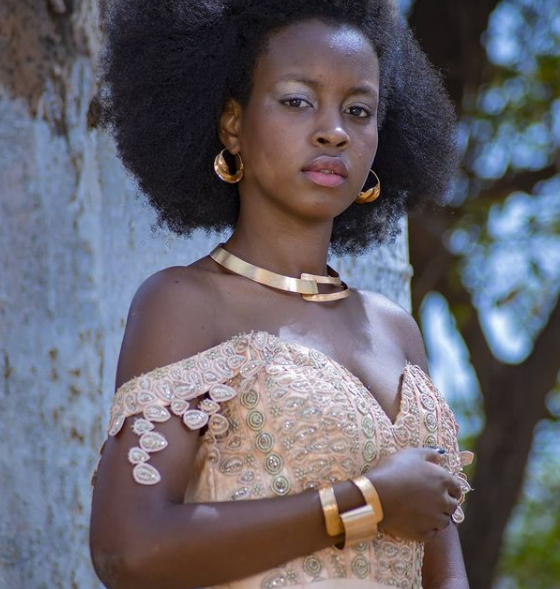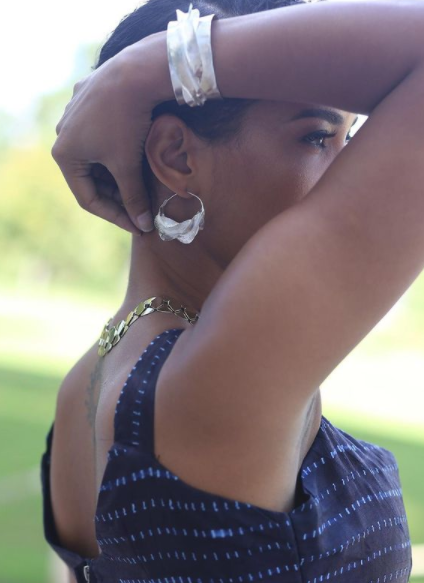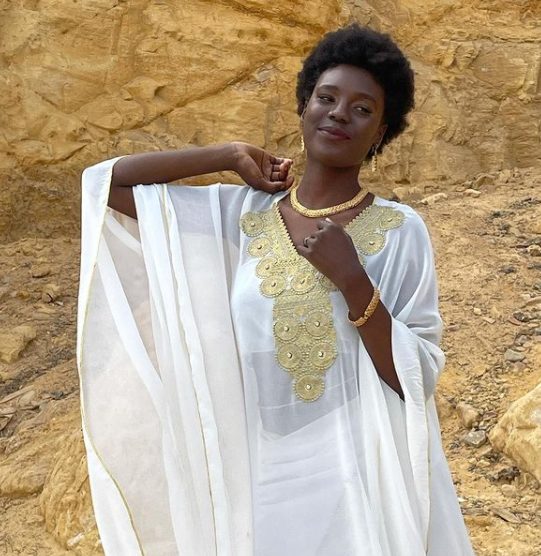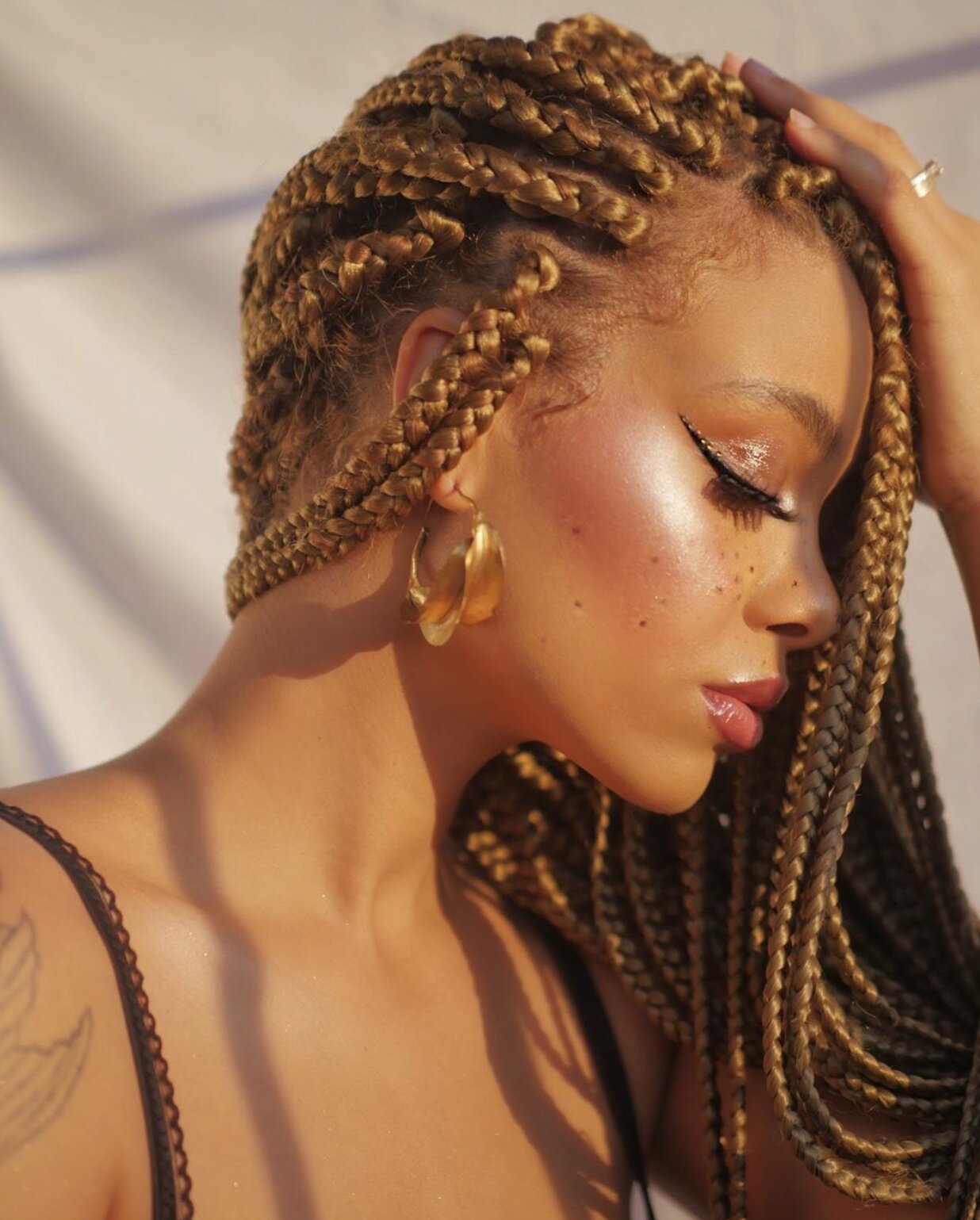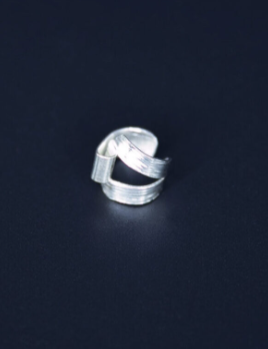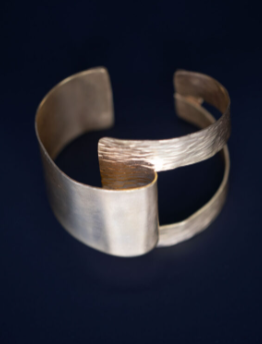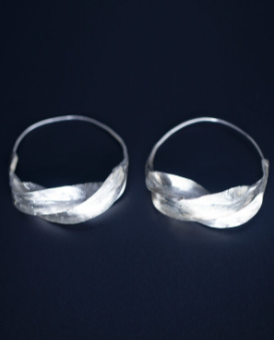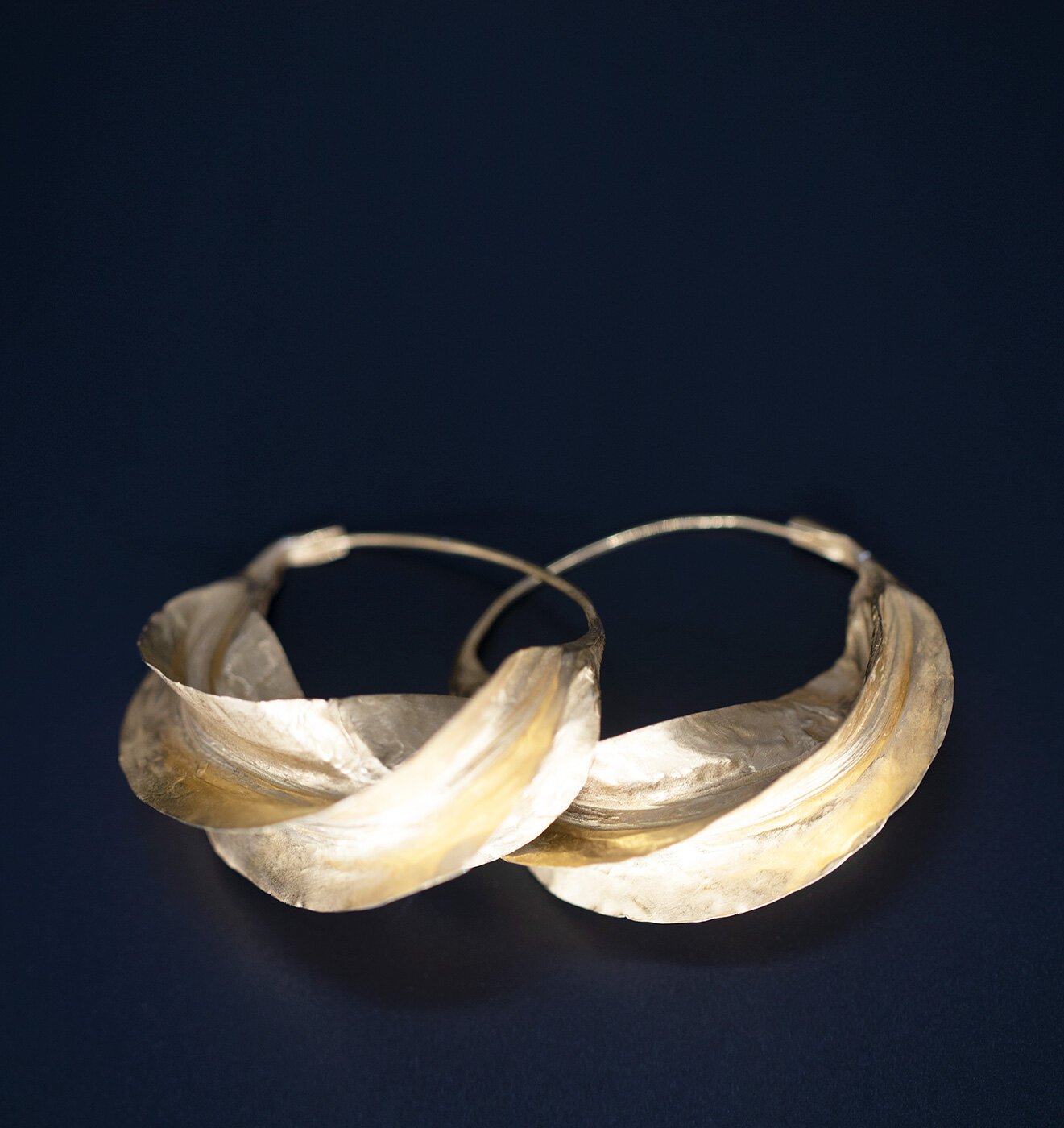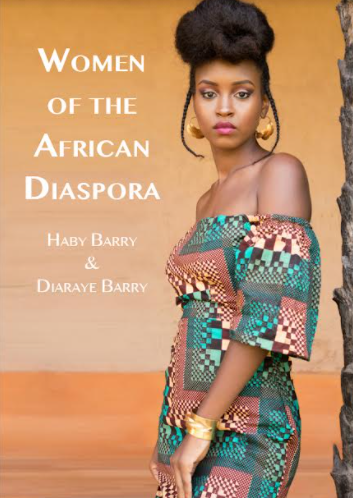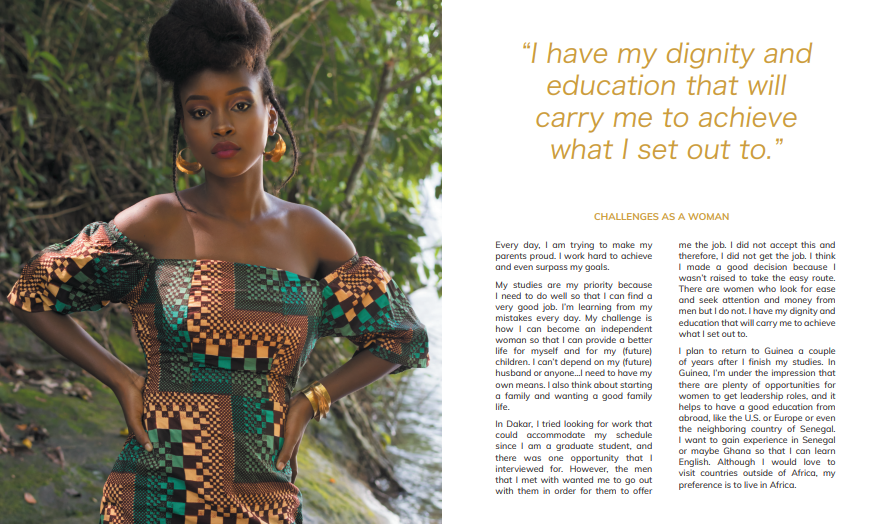Fulaba: A Legacy Of Elegance
Model pairings in the styles of Wolof, Tukulor and Fulani jewelry. (Images: Fulaba)
Nothing commands attention the way Fulani gold earrings highlight all skin tones across the lush color wheel of melanin. This incomparable design frames profiles while accentuating the vision seen by anyone blessed to make direct eye contact with the woman wearing them. Its natural radiance always leaves a sight-capturing first impression on those up close or gazing from the other side of a crowded room. Its ability to turn heads and make conversations pause at the syllable is the trait this resounding niche of beauty has on any and all beholders. Fulaba, a black-owned company providing handcrafted jewelry from African High Culture that launched with premium handcrafted Fulani jewelry, now also available for custom-to-order (any metal or size) wants to give every queen a lavish entrance. Haby Barry, its Founder and Owner, tells us about the cultural significance behind the jewelry, the story she was inspired to tell photographically and the process it takes to give her clients the best of African high culture. Before finding out the other parts of the journey, it's best to start back when people first began to stop, admire and inquire.
From The West Coast To West Africa
“I used to wear this pair of brass Fulani earrings I got from Harlem,” Haby Barry recollects as the light of a cloudless Los Angeles morning fills the new apartment she now calls home after moving from San Diego in July. “When I moved to Oakland in April 2012, especially in San Francisco, people would stop to compliment me and ask me about my Fulani earrings. One day when I went into the Apple Store, an employee there--a sister--came up to me and she said, ‘Oh, I really love your earrings’. Literally, right then and there, was when I had an ‘aha’ moment.”
Haby is the American-born, New York-raised daughter of Bubacar and Mariane, from the West African coastal country of Guinea. Her familial ties to Fulani people gave her a direct link to its rich history and culture. She began researching to see if there was anything like it on the market and found that no other brand was doing what she envisioned. She wanted to offer her customers a step above what was selling on Amazon, Etsy and other websites. Production and the high standards of the final look and feel she believed this idea could become accelerated the next steps. Haby was soon in contact with her aunt, Nene Foutah in Conakry, Guinea, to start a dialogue with some of the local artisans who knew how to create Fulani earrings using the best of metals that no one else was using. She found a few, carefully evaluated their work and selected Mamadouhady based on the 22-Karat, copper-plated gold designs and exceptional craftsmanship shown in the test patterns to her specifications. Haby even purchased the tools to ensure quality. The details were worth stressing. The result was a pair of gold-dipped Fulani earrings that launched Fulaba in 2015.
Alicia Keys wearing the Fulani earring Haby gifted her during a studio session. (Image: Fulaba’s Instagram)
A talented marketer with a degree in Music Business from New York University with over 13 years of experience furthering other brands, Haby used that advertising knowledge to boost her own idea and began reaching out to influencers to showcase her first piece to grace the scene. Acclaimed blogger Afrobella replied and included Fulaba in her holiday gift guide for Allure. Impressed with Haby's creation, Afrobella praised Fulaba on her website in 2016. Essence Magazine then featured Fulaba in its 2018 BuyBlack Gift Guide and started gaining customers of different races eager to wear her creations. Alicia Keys wore the pair of Fulaba earrings Haby gifted her in a post on Instagram around the same time in November 2018. Gaining press coverage meant that Haby's idea was seeing the light of day and being noticed as well. The vision itself and the method behind producing the first item each reflected the meaning of family and prosperity she wanted to display via this design of the jewelry all along.
Fulaba’s Fulani earrings in silver and gold unboxed. (Image: Fulaba)
“Traditionally, Fulani women wore these earrings, made of solid gold to define nobility and as a means to pass down wealth to their children. That’s why I chose to use precious metals for my line.” Haby then points out what gets lost in the popularity of Fulani earrings. “Many people have seen the style in big cities where African culture is prevalent, but the meaning behind them is not generally known or understood. I was intentional in getting the history of the Fulani culture out there. With every purchase, there’s a card attached that tells the history and meaning behind the pieces. The message is one of upliftment for all women, specifically African women and those across the diaspora, and also celebrates our ancestors who once wore this jewelry.”
Earrings have long been typecast as just accessories, modifying effects to a woman’s outfit being worn in the mirror before leaving the house for the day or evening. Clusters, studs, drops, threaders and chandeliers top the list as the most common forms of this shiny addition to plush jewelry boxes. Within these categories are mesmerizing offerings that sparkle to shine when worn and have complemented ensembles for centuries. Yet, with stunning contrast in grade and meaning, all pieces shaped by Fulaba are the focal points that instantly define statuses and present the timelessness of authentic African-inspired style that often goes unappreciated by a fashion industry bound to seasonal trends. Last year, Fulaba diversified its look with earrings, bracelets, rings and necklaces handmade in the Senegalese styles of the Wolof and this year added another line of the Tukulor including ear cuffs, a ring, necklace and cuff bracelet that each beam in the sun. The muse central to Fulaba's definition of sophistication and refinement is the one woman Haby sees as the very portrait of elegance--her late grandmother--Kadiatou.
Photograph of Kadiatou, Haby’s maternal grandmother, the inspiration behind Fulaba. (Image: Haby Barry)
Her Inspiration
“She was a very striking woman. Beautiful and intelligent.” Haby smiles as the series of adjectives describing the woman her mother practically spoke into lore throughout her childhood leaves her mouth before she starts to laugh out loud over her next sentence. “My mom would tell me that my great-grandmother used to have to remind all the men back in Guinea ‘not to eat her daughter’ whenever she walked into the room because they would all stare.” A picture showing Kadiatou’s trademark-worthy profile is displayed on Fulaba's homepage. Her beauty was inescapable, but her want to be heard outside of the spaces normally meant for Fulani women was counterculture. “She was also involved in politics leading to the time of Guinea’s independence from France in 1958. That was an era when it was uncommon for a woman to be active in that part of society.” Though Haby speaks as if she personally knew her grandmother, she never had the honor of meeting this once-in-a-lifetime soul who passed away while giving birth to her sixth child, 24 years before Haby was even born. Kadiatou’s spirit, however, lives on through the purposeful mission of her granddaughter’s stylish vision. “Being that I never met her, I got to know her by listening to all these stories from my mother and my aunts about her. I just wanted to connect that piece of my family to Fulaba. For me, this is not just a business. This is a legacy.”
Cover to the book Women Of The African Diaspora. (Image: Haby Barry)
Telling The Story Today
Sharing this legacy with others beyond what could be worn made Haby think of a new way to show people more about the story of this brilliant culture. The experience had to be visual and connect women on both sides of the Atlantic from West Africa to The Bay Area. The book ‘Women Of The African Diaspora’ is her visual presentation of why Fulaba and this subject is important to educate others about while preserving this tradition. Collaborating with co-author and the original face of Fulaba, Diaraye Barry, Haby eventually found herself behind the camera's lens viewing women adorned with her Fulaba jewelry wearing African garb on location in villages throughout Guinea in 2017 and then neighborhoods in Oakland in 2018. Journalist, social entrepreneur and former model Yomi Abiola was instrumental in the process of helping Haby and Diaraye deliver a final book and wrote the foreword that sets the stage for the book that kept Haby in flight to complete. Seeing the world was nothing new for her. She had already been to a few destinations popular in black travel such as Morocco and South Africa, but this trip to Guinea became a unique combination of work and pleasure as the number of international photoshoots increased and knowledge of her roots was attained. Haby was able to see the customs her parents instilled during her youth in concert with everyday life in Guinea firsthand that heightened her devotion to the project. Hundreds of photos were taken in both locations with plans to add more images to the growing catalog with Paris as the backdrop to finish the series of shoots in 2019. Sadly, the sudden death of Haby's father happened before the trip that year. She made the tough journey to Guinea for the funeral and to bury him there as he always wished. Though her smile dims slightly when talking about his passing, Haby found some comfort during the grieving process by putting the finishing touches on the book that celebrated the beauty of his homeland through her indelible narrative.
“Last year was when we worked on getting the story down by interviewing the women we featured,” Haby says about the work done after all the shoots. “Thematically, the book focuses on the diasporan women of the United States and Europe and how women were integral in the independence of Guinea. We also commissioned artists to open up each of the three chapters of the book. After consulting with professional designers to make sure the final version was how we both saw it, we debuted the book with a virtual launch this past December at The Museum of the African Diaspora located in San Francisco.” Haby’s pleasure in creating this book has made her excited for the next one which will take place in other cities. “This is definitely a debut. It’s not one and done. We see this as a series because I traveled to Oaxaca, Mexico and learned about the women of the diaspora close to there, in Escondido--and they are beautiful. I want to do some more photo shoots out there with them and throughout Central and South America because most of us don’t know that we’re everywhere.”
Excerpts from ‘Women Of The African Diaspora’ showing the individual stories and perspectives told into the words of each model. (Images: Haby Barry)
Haby’s parting remarks of the interview on the topic are followed by talk of a possible documentary, a touring multimedia exhibition, working with more West African artisans and other creative ideas she wishes to use to share this story. Fulani earrings, by shape, are infinite and gracefully circle back to their original points. What started with compliments on Haby's pair of Fulani earrings has blossomed into a company that is giving black women everywhere confidence, pride and elegance. One can only imagine how proud Kadiatou would be of the granddaughter she inspired generations later.


